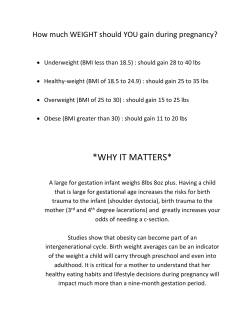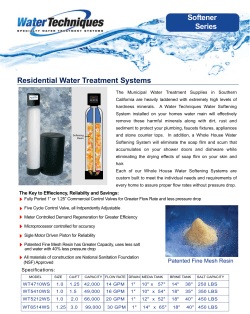
Livestock Nutrition for Small Acreages
Livestock Nutrition for Small Acreages Susan Pater Susan Pater Jim Sprinkle, Ph.D., Area Extension Agent, Animal Science, University of Arizona Cooperative Extension, Gila & Yavapai Counties introduction Often, new landowners desire to place livestock on their small acreages. Indeed, this is one reason why you bought your property—so you and other family members can enjoy country living as well as teaching children responsibility. You may have asked yourself the following questions: What kind of animal should I buy? Which will be the most costly to maintain? How much will they eat? Are there things I should be aware of? Will my small acreage provide enough grass to maintain my grazing animal? Where can I go with my questions? classifications Farm and specialty animals can be placed in the following broad classifications shown in Table 1: monogastric (or simple stomach like a human); ruminants (4 stomach compartments); pseudo-ruminants (3 stomach compartments); and hindgut fermenters (some digestion of fiber in the cecum). Farm animals with simple stomachs are typically more efficient at converting feed into final product (meat or eggs). You can get a general idea of the amount of feed required to produce a final product in Table 1 Cost. Costs for yearly maintenance can logically be expected to be greater for larger animals with less efficient feed conversion with horses > cattle > llamas/alpaca > sheep/goats > swine > rabbits > chickens. Additional costs for horses would include shoeing, tack, and transportation costs. Housing costs will vary with the size and complexity of animal care. Chickens and swine lack the body temperature regulation of other farm animals and thus housing costs will increase with these species. cost Costs for yearly maintenance can logically be expected to be greater for larger animals with less efficient feed conversion with horses > cattle > llamas/alpaca > sheep/goats > swine > rabbits > chickens. Additional costs for horses would include shoeing, tack, and transportation costs. Housing costs will vary with the size and complexity of animal care. Chickens and swine lack the body temperature regulation of other farm animals and thus housing costs will increase with these species. basic nutrients The main nutrients needed for livestock are water, protein, energy, minerals, and vitamins. Specific recommendations for the classes of livestock in Table 1 can be found in Cooperative Extension publications 10 available online. The following generalization can be made; ruminant animals and pseudo-ruminants are more efficient at supplying amino acids and B vitamins than are monogastric animals due to the contribution of microbes within the rumen. To a lesser extent, hindgut fermenters can also supply some of these essential nutrients through microbe action. Younger animals require a more nutrient dense diet, often necessitating the purchase of balanced commercial grain mixes with added minerals and vitamins. be aware Sheep and llamas/alpacas are sensitive to copper and should not be fed trace mineral products designed for cattle. Copper toxicity for these livestock species can occur when the diet exceeds 25 ppm (parts per million). Young, developing horses are especially sensitive to the calcium to phosphorus ratio and can develop developmental orthopedic diseases in response to inverted phosphorus ratios (phosphorus content exceeding calcium). It is recommended that the calcium:phosphorus ratio be around 1.5 to 2.0:1 for horses. Horses are also especially sensitive to rapid changes in diet, erratic feeding schedules, and feeding or watering while still heated up from exercise. These improper feeding management practices can contribute to colic, a life threatening event for horses. For ruminant animals, rapidly changing their diet from a roughage based to a grain based diet without allowing rumen microbes to adjust with “step-up” rations can contribute to acidosis in the rumen and rapid death. Chicken layers need extra calcium in their diet to compensate for the calcium deposited in egg shells but these higher calcium diets should not be fed to growing chickens. grazing Will your small acreage provide enough forage to maintain your livestock while also protecting your pastures from erosion and loss of species diversity? Probably not, unless you have an intensively managed and fertilized irrigated pasture. The small pastures on your ranchette should be viewed more as turn out paddocks that can be used for a few minutes per day. See http://cals.arizona.edu/pubs/animal/az1352.pdf for more guidelines. resources For more information, enter the following in your web browser search engine: “equine (or whatever species of choice you desire) nutrition” & Backyards Beyond Animal Classification Diet Characteristics Daily Feed Intake, % of Body Weight (except chickens) 1 Typical Harvest Weight, lbs.2 Feed Conversion (lbs. feed/ lb. live wt. gain) Swine Monogastric Requires balanced ration with complete nutrients, usually a complete purchased ration 4 % for young pigs 3 % for 200 lb. hogs 235 to 250 lbs. @ 170 to 200 days 3.3:1 Chicken Monogastric Requires balanced ration with complete nutrients, usually a complete purchased ration 7 lbs. to harvest for broilers; 1.8 to 2.4 lbs. laying mash/wk. for laying hens ≥ 20 wks 5 lbs. @ 7 wks. for broilers Broilers: 2:1 Layers: 4.2 to 5.6 lb. feed/doz. eggs Cattle Ruminant Can utilize high forage diets 2 % (greater for lactating and growing cattle) 1050 to 1350 lbs. @ 18 to 20 mos. 6 to 7:1 (higher grain diet) Sheep/Goats Ruminant Can utilize high forage diets; Goats can handle more browse 3 % (greater for young growing animals) Sheep: 110 to 135 lbs. @ 6 to 7 mos. Goats: 60 to 80 lbs. @ 6 to 11 mos. 6 to 8:1 Llama/Alpaca Pseudo-ruminant High forage; can handle 1.5 % (more for lactation browse and rapid growth) Rabbit Hindgut Fermenter Needs high fiber diet (25% recommended to avoid obesity) 2.6 % 4 to 5 lbs. @ 56 to 70 days 3.3 to 5:1 Horse Hindgut Fermenter For idle horses mostly hay diet; add grain for exercise, growth and lactation 2 % average 3 % lactating 1.5 % calorie control For example, a 200 lb. hog would require 6 lbs. of feed per day (200 lb. * .03 = 6.00 lb.) Beef cattle harvest weights are highly dependent upon sex, frame size, and breed http://ag.arizona.edu/pubs/animal/az1054.pdf 1 2 “Cooperative Extension”. This will help you enter the gateway to a large base of unbiased, peer reviewed articles written for lay people. Some resources you may want to look at as a start are indicated below. Rabbit Nutrition, Scientific article http://www.asas.org/jas/jas0942.pdf Rabbit, North Dakota State University http://www.ag.ndsu.edu/pubs/alt-ag/rabbit.htm Agricultural Alternatives, Rabbit Production, Penn State http://agalternatives.aers.psu.edu/Publications/rabbit.pdf Commercial Rabbit Production, Department of Animal Production, Republic of Botswana http://www.gov.bw/Global/MOA/Commercial%20Rabbit%20 Production.pdf Management of Small Flocks of Chickens http://www.afn.org/~poultry/flkman2.htm Poultry Science Technical Information, North Carolina Cooperative Extension Service http://www.ces.ncsu.edu/depts/poulsci/tech_info.html Small Scale Poultry Flocks Resources, North Carolina Cooperative Extension Service http://robeson.ces.ncsu.edu/files/library/78/0206poultryindex.pdf Llamas and Alpacas http://www.rmla.com/camelid_nutrition.htm Equine Nutrition, Texas A & M University http://animalscience.tamu.edu/academics/equine/publications/ index.htm Thinking of Owning a Pleasure Horse?, University of Arizona http://cals.arizona.edu/arec/pubs/horses/horsebookletprint.pdf Goats, Langston University http://www.luresext.edu/goats/index.htm Goats, Oklahoma Meat Goat Manual, Oklahoma State University http://meatgoat.okstate.edu/ ATTRA National Sustainable Agriculture Information Serv.; Meat Goats: Sustainable Production http://www.attra.org/attra-pub/PDF/meatgoat.pdf ATTRA National Sustainable Agriculture Infor. Serv.; Dairy Goats: Sustainable Production http://www.attra.org/attra-pub/PDF/dairygoats.pdf Sheep, Swine, and Beef Cattle http://cals.arizona.edu/gila/animalsciences/publications.html http://www.csubeef.com/ (access to Cattlemen’s Library online from here) http://www.ansi.okstate.edu/ Sheep Production Handbook, order form http://www.sheepusa.org/?page=site/text&nav_id=42c985d7b36d44 5107825b11f21ff35b Pork Industry Handbook, order form http://www.ces.purdue.edu/extmedia/AS/PIH_Order_Form_2008.pdf Small Scale Pork Production, SARE publication http://www.sare.org/publications/hogs/profpork.pdf Spring 2010 11
© Copyright 2025



















